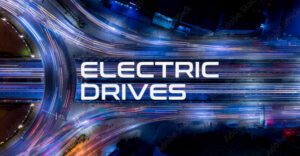
The UK faces a critical challenge in decarbonising its transport sector. While electric passenger cars are becoming more common, heavy goods vehicles (HGVs) remain largely dependent on diesel. As a result, the HGV sector accounted for roughly 20% of the UK’s transport emissions in 2023. The electrification of HGVs is one solution to reducing emissions and moving the country towards its net-zero targets.
Why the shift to electric HGVs is crucial for the UK’s future
The transition to electric HGVs (eHGVs) is an environmental imperative and offers businesses financial and reputational benefits. As fuel prices rise, switching to eHGVs presents the likelihood of long-term savings through lower fuelling and maintenance costs.
At the same time, the commitment to reducing carbon emissions will enhance organisations’ environmental, social and governance (ESG) and corporate social responsibility (CSR) credentials. Enhanced credentials help to attract and retain more customers and drive satisfaction across the employee base. Especially as sustainability becomes a more significant buying factor for consumers.

Furthermore, eHGVs provide smoother, quieter driving experiences, which benefits drivers and reduces noise pollution in urban areas.
Current adoption of electric HGVs in the UK
eHGVs currently make up just 0.3% of the UK’s total HGV fleet. And, although major companies like Amazon and John Lewis are among those first movers electrifying their fleets, most businesses are still hesitant about making the switch.
However, public sector initiatives are leading the way. For example, Westminster City Council has successfully integrated electric buses and refuse trucks into its fleet. Following this trend, Haringey Council has been re-shaping its services with specialist electric vehicles and solutions.
Thanks to initiatives like these, the zero-emissions HGV sector is growing. The Society of Motor Manufacturers and Traders (SMMT) reported a 30% surge in eHGV registrations earlier this year. With growing interest in sustainable freight, the question becomes: How do we continue and accelerate this momentum?

What’s required to accelerate electrification?
Government support
The UK government’s financial incentives are playing a pivotal role in accelerating the shift to eHGVs. However, a recent study by Drax Electric Vehicles found that one in three fleet operators are unaware of the grants and support available to them.
The Plug-in Van Grant provides up to £25,000 off the purchase price of electric trucks, while programmes like the Workplace Charging Scheme help businesses offset the cost of installing charging infrastructure.
Last year, the government announced £200 million to extend the nation’s electric freight infrastructure.
Governmental support and increased awareness across the industry will help fleet operators feel confident about making the switch. With clear savings on display, the business advantages of electric freight investments become a no-brainer.
Innovative charging solutions
The lack of adequate charging infrastructure remains one of the major obstacles to eHGV adoption. However, innovative solutions are emerging to address these challenges.

For instance, we’re seeing the development of portable and modular charging stations to allow multiple vehicles to charge at once in areas with limited space. Furthermore, MegaWatt truck charging is on the rise, with the capacity to charge trucks at record speeds.
Experimental charging systems could hold the key. Overhead cables, or even charging-capable roads, are being trialled worldwide. As these solutions become more advanced, eHGVs become more accessible and reliable. As with the entire EV transition, access and confidence are key.
What about alternative fuels?
Hydrogen’s also emerging as a potential alternative for long-haul freight, as well as a charging solution for remote areas.
In most cases, a hydrogen-powered HGV provides a greater range than electric batteries, and re-fuelling with hydrogen is faster than recharging. However, electricity’s far easier to come by than hydrogen. An eHGV charge point simply requires access to the grid. However, hydrogen re-fuelling centres would demand purpose-built storage facilities. Furthermore, the energy required to turn hydrogen gas into fuel makes the process somewhat less efficient than recharging batteries.

So, hydrogen may not be an industry-wide answer, but with increased ranges and faster re-fuelling, there’s a space in the HGV market for this innovative fuel. In certain use cases, such as long-haul inner-city freight between specialist depots, hydrogen HGVs could become very successful.
The future of eHGVs
The keys to unlocking the sustainable haulage puzzle are continued investment, innovation, and collaboration. And with the UK’s new Labour government announcing its intended support and investment in sustainable transport in its Autumn Budget, we could see a new era unfold for the UK’s roads.


